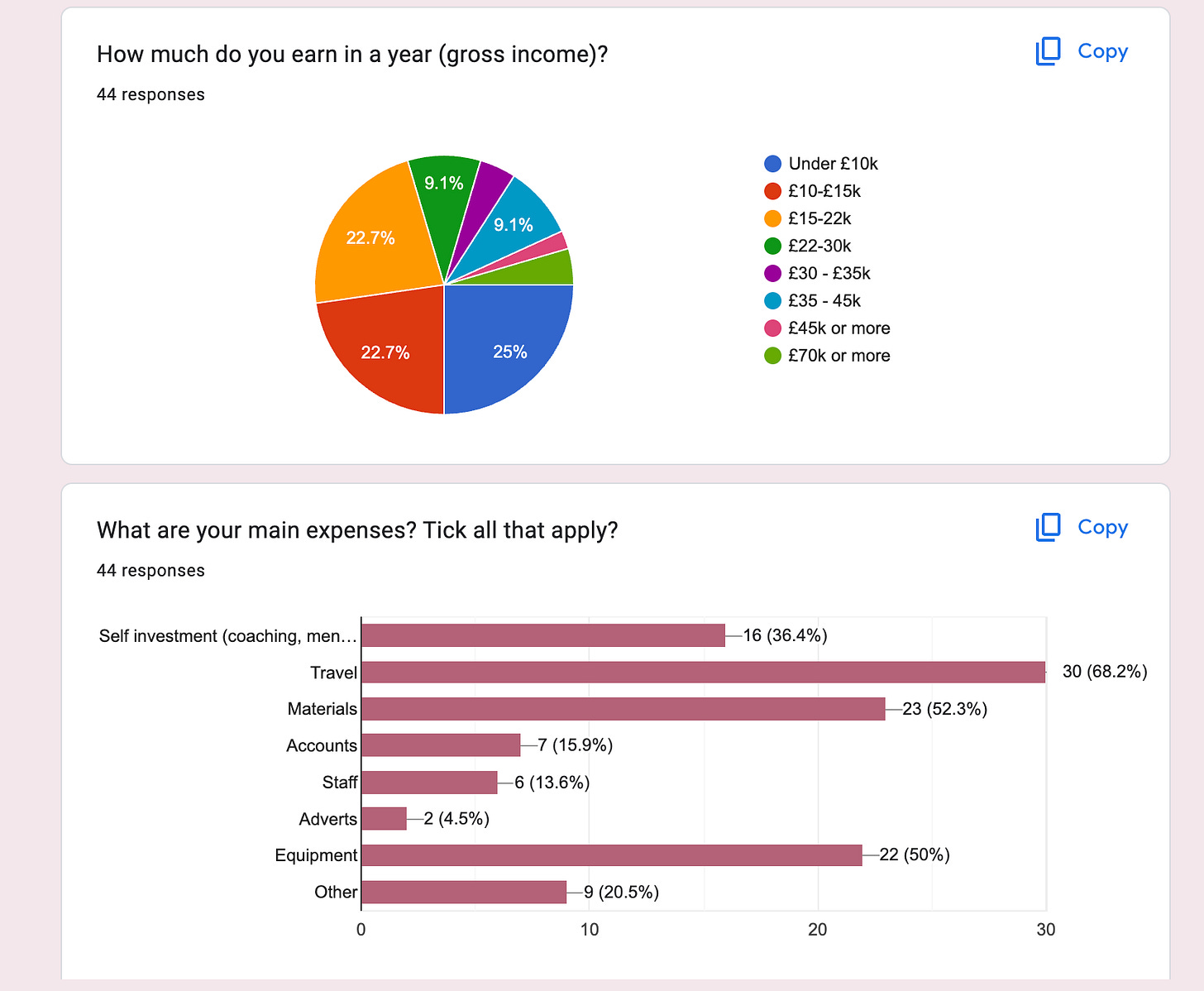We're half way there in our data set
NE Cultural Freelancers Income Transparency Project and Survey
“Our business model is heavily reliant on ACE Project Grant bids, where the success rate is currently low and other commission pots and match funding are scarce. It's difficult to forecast our capacity and cash flow when constantly waiting for ours and our clients results. In some cases they are all successful and we're very busy, other times they are rejected and we're quieter. In house we have moved more towards a commercial model to sell our services, but still, most of our clients are waiting on funding app results to be able to enlist our services.”
Hi all,
If you are based anywhere in the North East, we would love for you to fill in our survey. We are aiming for at least 100 responses.
You can take the survey here which will take no more than 5 minutes of your time. You can stay anonymous and should you want to be in the running to win an amazon gift card please leave your email.
Here is the info we’ve received so far which I’m sure lots of you will find interesting.
So many companies never pay invoices on time! I have recently had to stop working for a charity due to the continual avoidance of paying invoices for work that I have already completed. Many orgs will say they don’t have enough money/funding to afford me reasonable hours outside of singular funded projects. It really makes you question your worth
WE ASKED; What are your main challenges with earning a consistent income in the cultural, heritage and creative sector being based in the North East?
There were 44 responses and we have provided a summary of them all which highlights the numerous challenges faced by freelancers and artists in the creative industry.
You will see an emphasis on financial instability, inadequate funding, and lack of support.
Key issues include:
1. **Seasonal and Inconsistent Income**:
- Work is heavily dependent on weather, seasonal demands, and short-term projects.
- Freelancers often have to juggle multiple clients and projects to make ends meet, leading to stress and burnout.
2. **Delayed Payments and Low Rates**:
- Many organisations fail to pay invoices on time, affecting cash flow.
- Some clients, including charities, avoid paying for completed work.
- Daily rates have remained stagnant for years, failing to keep up with rising costs.
3. **Funding Challenges**:
- Reliance on grants and commissions with low success rates creates financial uncertainty.
- Funding cycles are short, with a focus on emerging artists rather than mid-career or established ones.
- There is a lack of region-specific funding and long-term strategic support.
4. **Additional Costs and Unpaid Labor**:
- Disabled artists face higher production costs, which are often not accounted for.
- Unpaid tasks such as applying for roles, moving studios, and relationship building are time-consuming and financially draining.
- Travel expenses are often not covered by clients, impacting overall income.
5. **High Competition and Limited Opportunities**:
- The market is competitive, with a small group of people receiving repeat commissions.
- Freelancers struggle to secure long-term or well-paid contracts.
6. **Impact on Personal Life**:
- Balancing numerous projects affects work-life balance and mental health.
- Caregiving responsibilities and personal health issues exacerbate financial and professional instability.
7. **Sector-Wide Issues**:
- Budgets for arts and heritage organisations have been slashed, reducing the number of available commissions.
- Unrealistic expectations and timelines from commissioners further strain resources and deliverables.
Overall, the creative industry is marked by financial instability, inadequate support systems, and high competition, making it challenging for freelancers and artists to sustain their careers and livelihoods.









